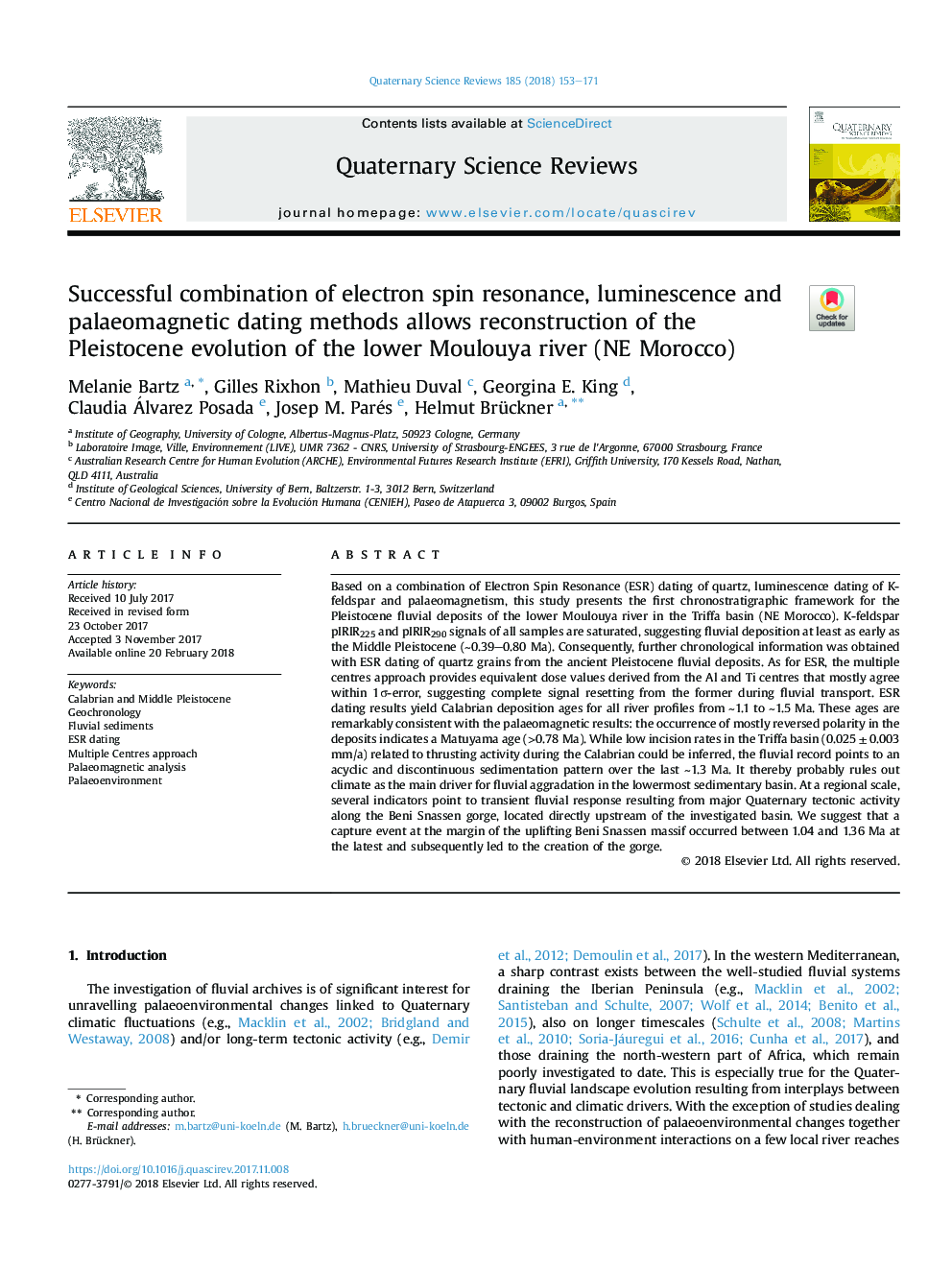| کد مقاله | کد نشریه | سال انتشار | مقاله انگلیسی | نسخه تمام متن |
|---|---|---|---|---|
| 8914922 | 1640750 | 2018 | 19 صفحه PDF | دانلود رایگان |
عنوان انگلیسی مقاله ISI
Successful combination of electron spin resonance, luminescence and palaeomagnetic dating methods allows reconstruction of the Pleistocene evolution of the lower Moulouya river (NE Morocco)
دانلود مقاله + سفارش ترجمه
دانلود مقاله ISI انگلیسی
رایگان برای ایرانیان
کلمات کلیدی
موضوعات مرتبط
مهندسی و علوم پایه
علوم زمین و سیارات
زمین شناسی
پیش نمایش صفحه اول مقاله

چکیده انگلیسی
Based on a combination of Electron Spin Resonance (ESR) dating of quartz, luminescence dating of K-feldspar and palaeomagnetism, this study presents the first chronostratigraphic framework for the Pleistocene fluvial deposits of the lower Moulouya river in the Triffa basin (NE Morocco). K-feldspar pIRIR225 and pIRIR290 signals of all samples are saturated, suggesting fluvial deposition at least as early as the Middle Pleistocene (â¼0.39-0.80 Ma). Consequently, further chronological information was obtained with ESR dating of quartz grains from the ancient Pleistocene fluvial deposits. As for ESR, the multiple centres approach provides equivalent dose values derived from the Al and Ti centres that mostly agree within 1Ï-error, suggesting complete signal resetting from the former during fluvial transport. ESR dating results yield Calabrian deposition ages for all river profiles from â¼1.1 to â¼1.5 Ma. These ages are remarkably consistent with the palaeomagnetic results: the occurrence of mostly reversed polarity in the deposits indicates a Matuyama age (>0.78 Ma). While low incision rates in the Triffa basin (0.025â¯Â±â¯0.003 mm/a) related to thrusting activity during the Calabrian could be inferred, the fluvial record points to an acyclic and discontinuous sedimentation pattern over the last â¼1.3 Ma. It thereby probably rules out climate as the main driver for fluvial aggradation in the lowermost sedimentary basin. At a regional scale, several indicators point to transient fluvial response resulting from major Quaternary tectonic activity along the Beni Snassen gorge, located directly upstream of the investigated basin. We suggest that a capture event at the margin of the uplifting Beni Snassen massif occurred between 1.04 and 1.36 Ma at the latest and subsequently led to the creation of the gorge.
ناشر
Database: Elsevier - ScienceDirect (ساینس دایرکت)
Journal: Quaternary Science Reviews - Volume 185, 1 April 2018, Pages 153-171
Journal: Quaternary Science Reviews - Volume 185, 1 April 2018, Pages 153-171
نویسندگان
Melanie Bartz, Gilles Rixhon, Mathieu Duval, Georgina E. King, Claudia Álvarez Posada, Josep M. Parés, Helmut Brückner,